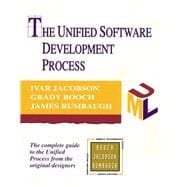This landmark book provides a thorough overview of the Unified Process for software development, with a practical focus on modeling using the Unified Modeling Language. The Unified Process goes beyond mere object-oriented analysis and design to spell out a proven family of techniques that supports the complete software development life cycle. The result is a component-based process that is use-case driven, architecture-centric, iterative, and incremental. The Unified Process takes full advantage of the industry-standard Unified Modeling Language. This book demonstrates how the notation and process complement one another, using UML models to illustrate the new process in action. The authors clearly describe the semantics and notation of the different higher-level constructs used in the models. Constructs such as use cases, actors, subsystems, classes, interfaces, active classes, processes, threads, nodes, and most relations are described in the context of a model. Object technology practitioners and software engineers familiar with the authors' past work will appreciate The Unified Software Development Process as a useful means of learning the current best practices in software development.








